Influencer Marketing 101: How to Find, Vet & Collaborate With Influencers on #SponsoredPosts

You’re on the lookout for a new moisturizer to help with your child’s eczema.
These two pieces of content appear in your Instagram feed:
- A post by a skincare brand raving about how amazing their own products are.
- A post from a parenting blogger whose opinion you trust, talking about how the same baby moisturizer cleared up their toddler’s eczema in a month.
Which post are you more likely to engage with? Chances are, it’s option two. It’s posted by someone you trust, making it a more influential piece of content that drives you towards the brand’s website.
This is called influencer marketing—something brands are set to spend $4.62 billion on by 2023.
Want to get in on the action? In this guide, we’ll share everything you need to know about partnering with influencers for your ecommerce business’ social media marketing strategy.
Table of contents
- What is influencer marketing?
- The different types of influencers
- Does influencer marketing work?
- How to create an influencer marketing strategy
Influencer marketing is the process of working with popular social media users in your space to promote products.
These people—like bloggers, podcast hosts, and content creators—have “influence” over their audience. Their followers think, “I trust what this influencer has to say, so this product must be good.”
And straight into their online shopping cart it goes!
Let’s take a look at the four types of influencer you can partner with on sponsored content.
Nano-influencers
Nano-influencers are social media users with fewer than 10,000 followers.
While they might sound like small figures, not every influencer has to have an enormous follower count to be worth collaborating with. In fact, a quarter of marketers say everyday consumers are the most effective people to partner with on influencer marketing campaigns.
Why? Because almost half of social media users are drawn to influencers who are “real people” (compared to just 10.4% being drawn to celebrities).
Nano-influencers have small (but mighty) followings. Their audience usually hangs off every word they say, with largely-overlapping interests—making them superb options for ecommerce brands to start promoting their products through influencer marketing.
Micro-influencers
Micro-influencers are social media users with 10,000—50,000 followers.
It’s the most common type of influencer, with data by Klear showing that 91% of all sponsored posts are created by micro-influencers.
John Frigo, Ecommerce Manager at Best Price Nutrition, is one marketer using this tier of influencer in sponsored campaigns: “I like working with micro-influencers, or even finding influencers among my own customers who have a decent social following.”
“I find them to be more authentic and genuine as they actually shop with our company—I’m not just paying a stranger to say good things about us. I also find that they typically work cheaper, or sometimes will work just for a free product or a gift card to our shop.”
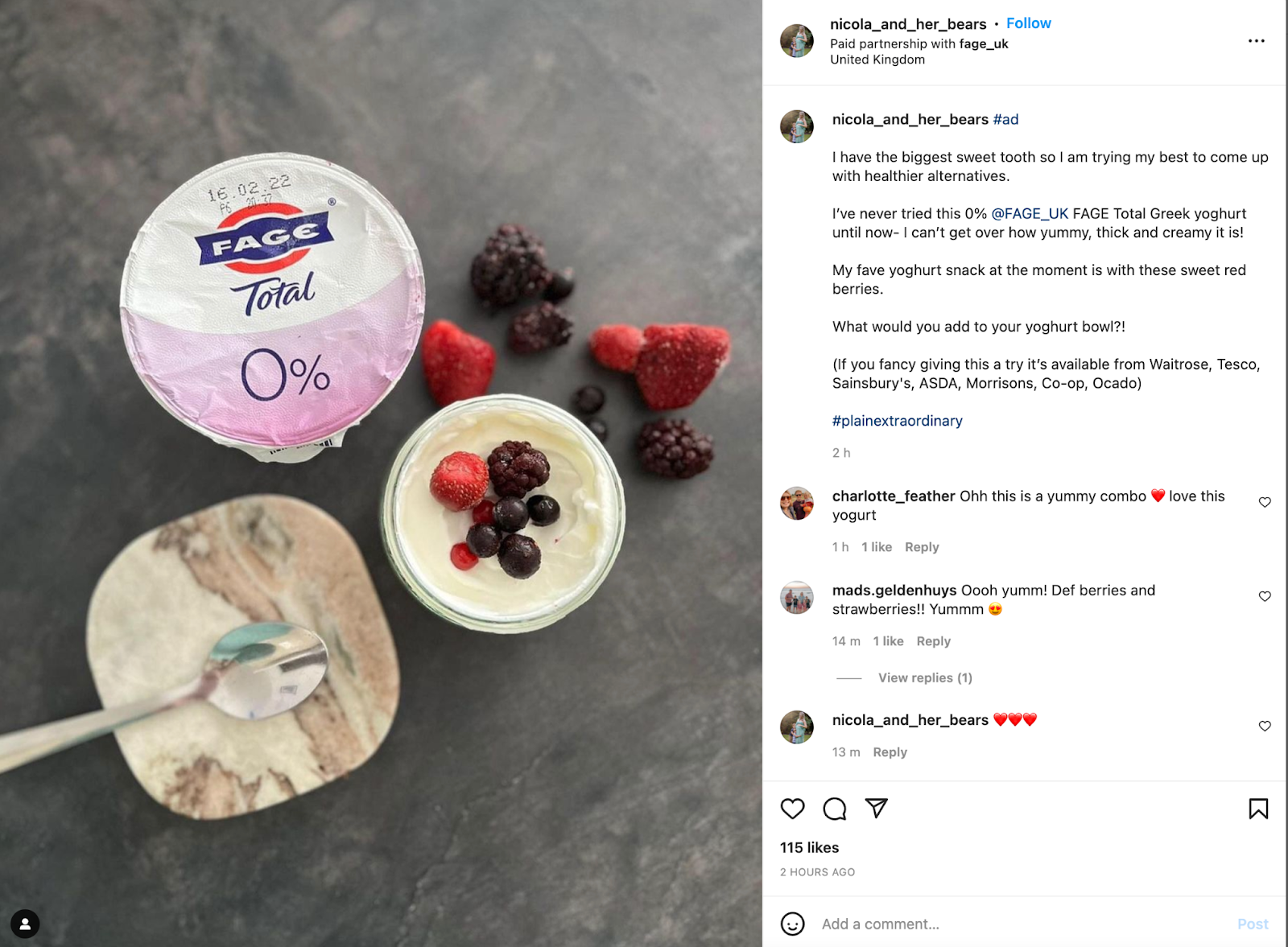
#cta-visual-pb#<cta-title>Is your ecommerce store ready for influencer marketing success?<cta-title>See how you can create a dynamic, revenue-driving ecommerce site.Learn more
Mid-tier influencers
Mid-tier influencers have between 50,000 and 500,000 followers on their main social media platform.
Jason Falls, Senior Influence Strategist at Cornett and author of Winfluence, argues that the brand advantage of partnering with mid-tier influencers is they’re “just learning their way into brand collaborations and are willing to partner for low cost or just products or incentives.”
“Of course, if you’re not able to pay influencer fees, you should respect their time and talents and not ask for much. But I’ve seen programs where 300 influencers are sent $100 or less in product in exchange for a post—that has worked quite well.”
Macro- or celebrity influencers
Macro-influencers have larger social media followings; more than 500,000 on their main social channel.
These are the TikTok or Instagram Influencers who we normally default to when thinking about influencers. But while their follower counts are huge, engagement rates tend to decline the more followers they have.
Ecommerce brands partnering with macro-influencers—or paying for celebrity endorsements—report lots of awareness but few sales in comparison.
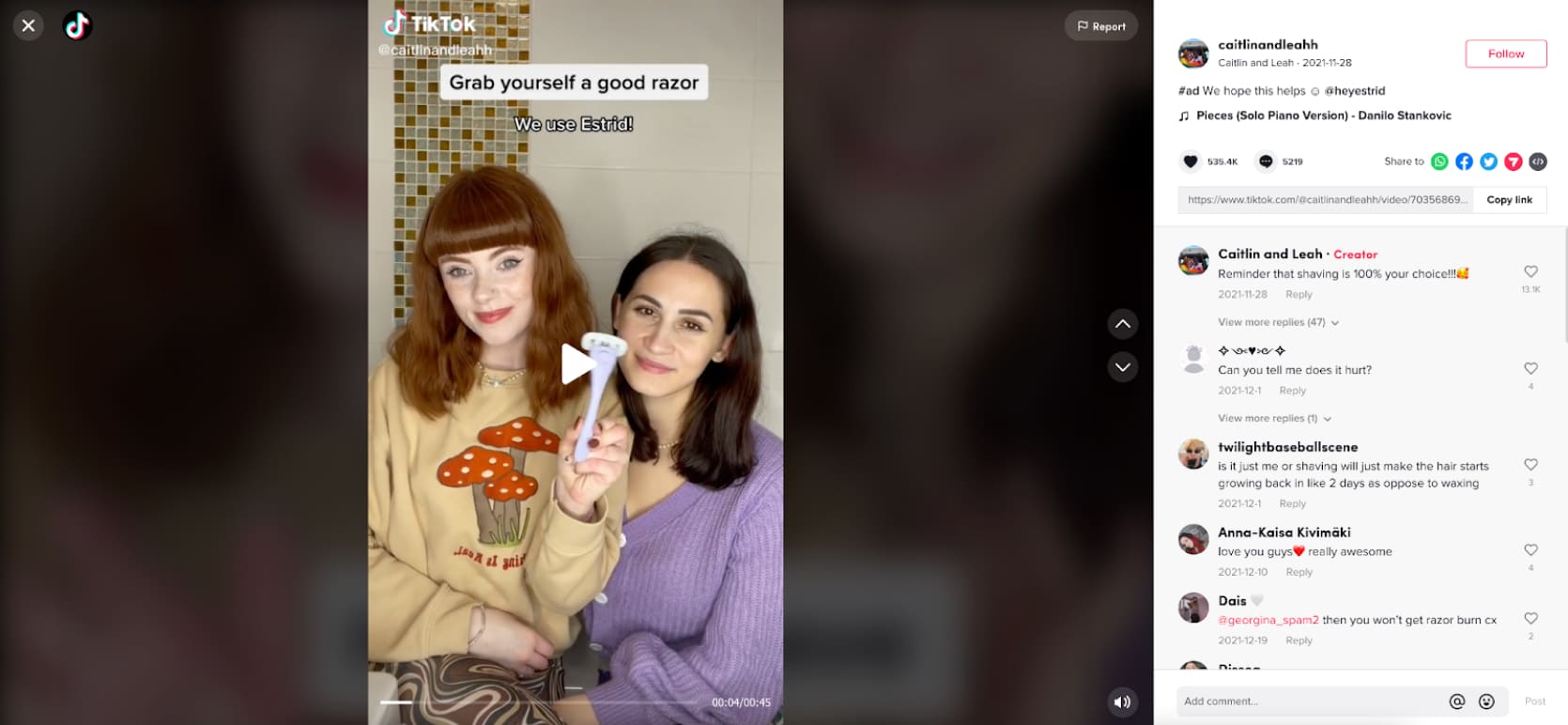
Influencer marketing isn’t a new channel. Brands have collaborated with online influencers since the rise of YouTube vloggers back in 2009.
It’s a marketing tactic that has stood the test of time for three reasons:
- Raises brand awareness. The COVID-19 pandemic forced people to spend more time on social media. Nielsen found that staying home caused a 60% increase in content consumption. Influencers demand a large slice of that attention.
- Builds social proof. An influencer’s audience hangs off every word they say. They trust their opinions—and if their opinion is that your product is worth buying, you’ll have an easier time selling to their audience.
- Influences purchase decisions. Branded content comes across as biased. Yet almost 35% of social media users aged 16—34 are “very” or “extremely” likely to purchase something online if their favorite influencer is promoting it.
These influencer marketing advantages come together to create the perfect storm for ecommerce brands.
It’s why 36% of marketers say influencer-produced content outperforms branded content, and more than half of marketers say their influencer marketing strategy converts at a higher rate than other channels they invest in.
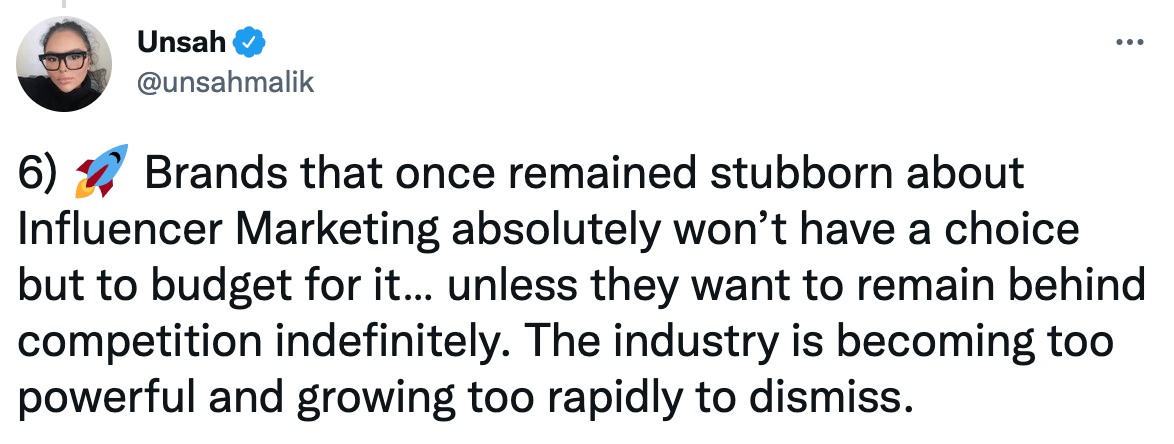
There’s no doubt that influencer marketing has the potential to grow your ecommerce business.
Here’s how to build a strategy, so you partner with the right influencers for the right budget, producing content their audience will love (and purchase off the back of).
- Determine your goals
- Create brand guidelines
- Find influencers in your industry
- Vet your shortlisted influencers
- Iron out the terms of the collaboration
- Decide on a fee
- Measure success
1. Determine your goals
Just like any ecommerce marketing campaign, start by defining the goal for your new influencer strategy.
Research shows the most common influencer marketing goal is brand awareness, closely followed by increased product consideration and sales:
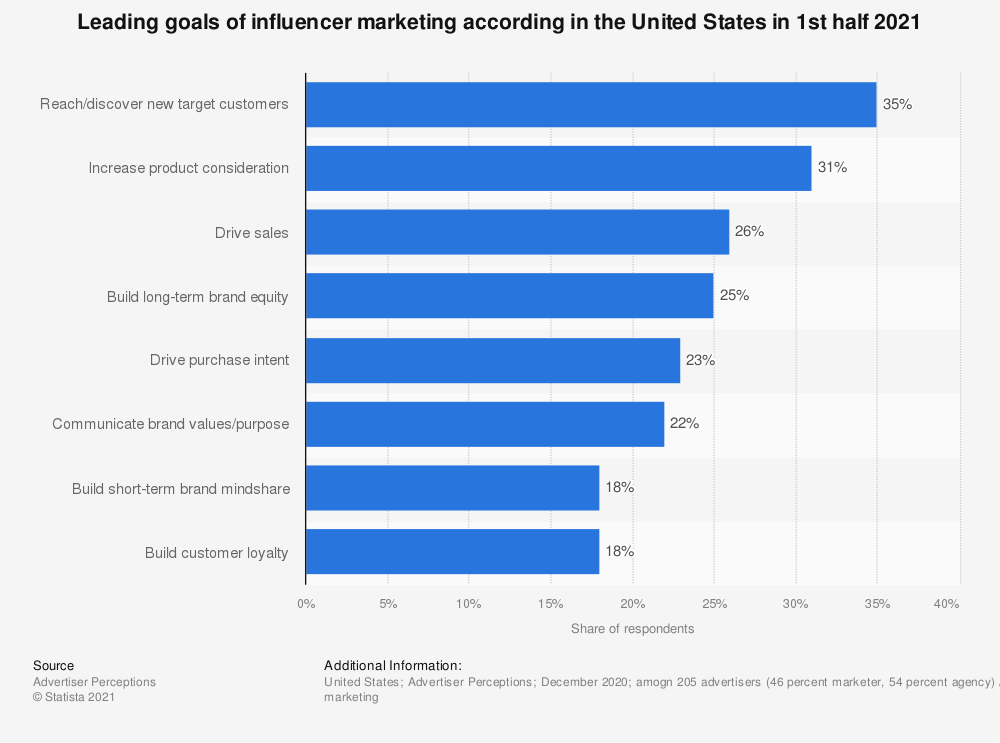
Don’t throw things at the wall and hope they somehow stick. That’s a recipe for disaster: you’ll be working with influencers on campaigns that don’t give a return on your investment.
Instead, use the SMART goal framework and set key performance indicators (KPIs) that keep your new influencer marketing campaign on-track. If your goal is to increase brand awareness, for example, KPIs could be:
- Brand mentions
- Audience reach
- Social media followers
They’re not necessarily the same metrics you’d benchmark if your influencer marketing goal was product sales. In that case, conversions and revenue would be higher on your priority list.
2. Create brand guidelines
Next, produce brand guidelines to share with future influencers.
Marketers often glance over this step and assume the influencer should have total control over the campaign. They know their audience best, right?
Not necessarily.
There’s a fine line between giving too much control to your influencer and keeping it to yourself. Granted, the influencer knows the type of content their audience enjoys (more on this later!), but any influencers you partner with are seen as an extension of your brand.
“Influencers are not the core storytellers for your brand, but they can certainly help move the story along if they are properly informed and aligned. They should have a similar “why” as you so that their storytelling about your brand makes sense.”
— Anne-Marie Faiola, founder and CEO of Bramble Berry
Don’t worry—it doesn’t need to be overly complex. Your brand guidelines can be as simple as a one-pager that details:
- Your brand’s tone of voice
- The USPs of your product(s)
- Examples of successful campaigns you’ve done in the past
- How you’ll measure success
Prepare the document in advance so it’s not rushed. Provide it to influencers before they run away with content ideas that don’t necessarily fit your brand style. You can stay closely aligned before the campaign goes live to ensure the campaign will resonate and be on-brand.
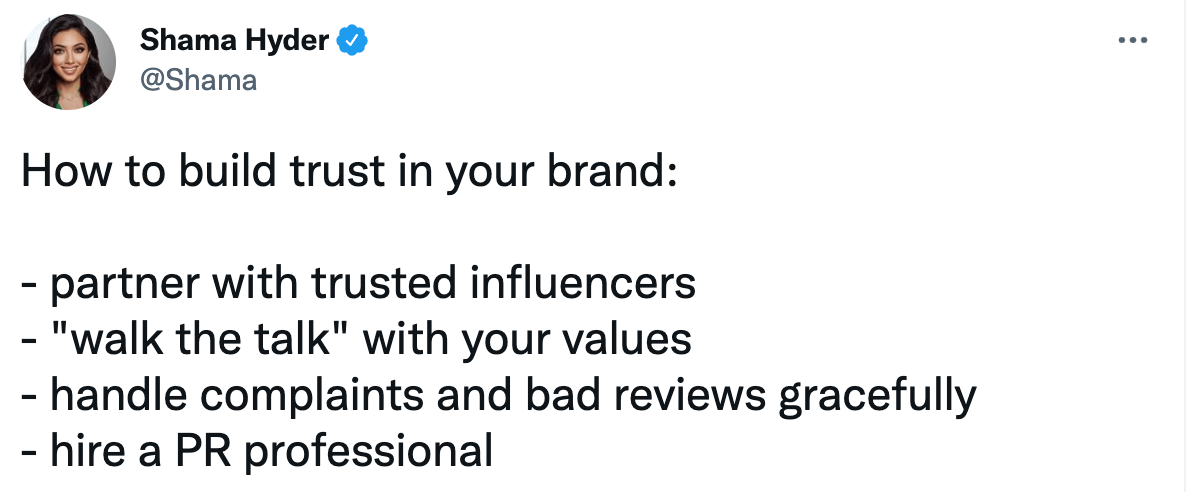
3. Find influencers in your industry
Once your brand guidelines are in play, it’s time to move on to the most exciting part: finding influencers to collaborate with.
Do this through:
- Customer surveys. The goal of influencer marketing is to reach people that match your buyer persona. So, go straight to the people who fit that criteria: existing customers. Ask one simple question to uncover influencers: “Which influencers do you follow on which platform?”
- Audience research tools. Platforms like SparkToro and RivalIQ do the heavy lifting when searching for influencers. Type the industry you’re working in into the search function and find the most popular social media users in that space.
- Search hashtag results. If you’re searching for influencers with larger followings, consult the hashtag results page on various platforms to discover users in your niche. For example: If you’re a fitness brand, search the #fitnessjourney Instagram hashtag. You’ll see posts from Bobbie Jordan and Jamie Corso—two potential nano-influencers to collaborate with:
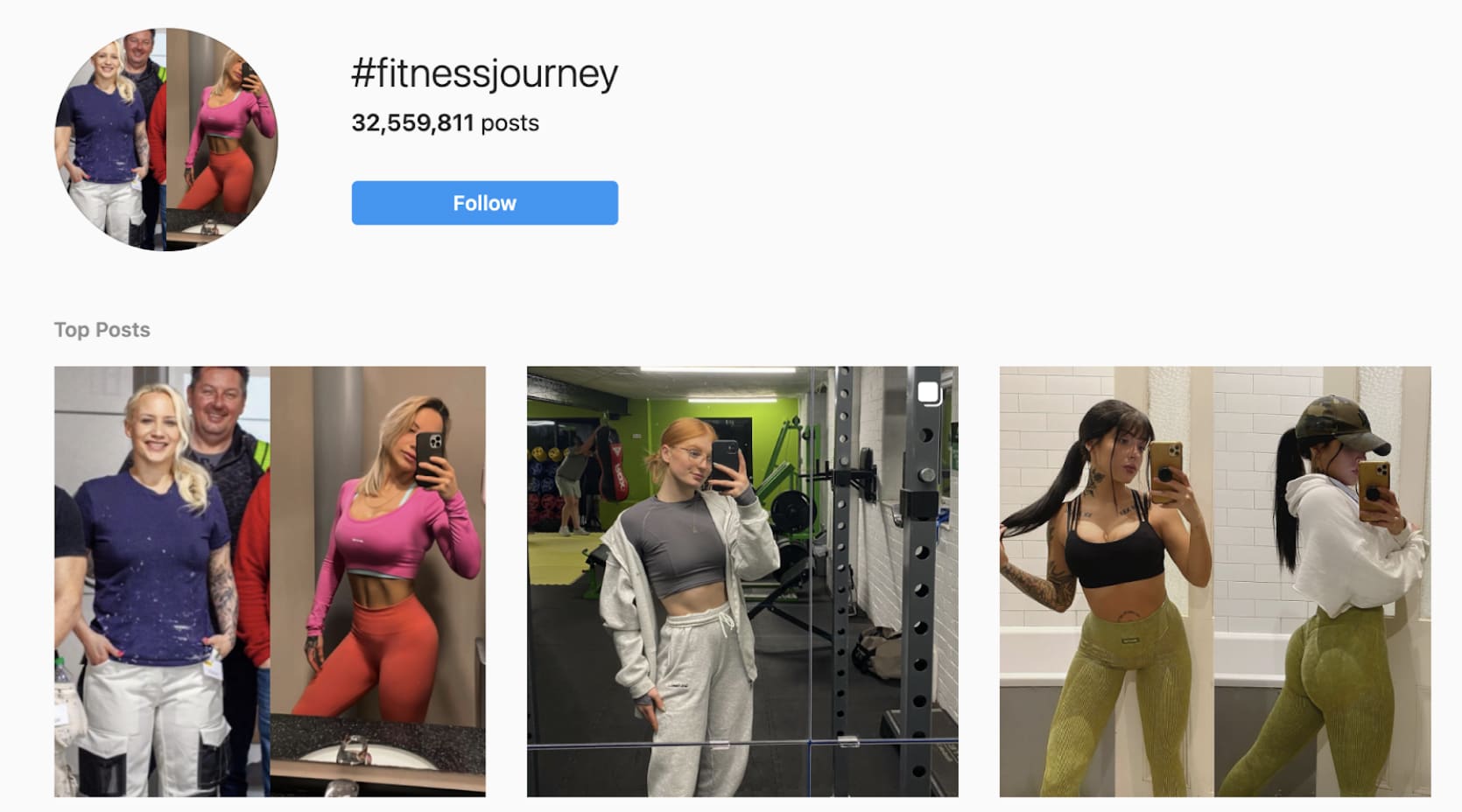
4. Vet your shortlisted influencers
Once you’ve got your shortlist, go through each potential influencer’s content or profile with a fine-toothed comb.
Influencer partners need to make more money for your business than the fee they’re charging. And remember: the influencers you’re partnering with are an extension of your brand. Everything they do needs to closely overlap with the brand guidelines we mapped out earlier.
Here’s a simple checklist to make sure you’re selecting the right influencers for your next campaign:
- Are they active on the social networks your target audience uses? There’s not much use in partnering with Snapchat influencers if your target demographic only uses Instagram—proven to be the most popular platform for influencer marketing and used in 89% of all campaigns. TikTok is creeping up behind; some 64% of content creators that are working with brands offer content creation services on TikTok.
- Does their audience overlap with your target customer? “The most lucrative collaborations are influencers whose audience is dedicated to a specific interest,” says Ryan Bales, CEO of West Slope. “For example, a ski brand can expect to see a better ROI by working with a ski influencer, rather than a larger influencer whose audience isn’t interested in skiing.”
- Do they have strong engagement rates on their content? Half of marketers say their biggest challenge when working with influencers is being unable to spot fake followers. Low engagement rates are a sign of poor follower authenticity. Marketing tools like Grin uncover these metrics.
- Do they respond to comments? Almost 63% of social media users say whether or not an influencer responds to comments impacts the trust they have in them.
- Do they overload their audience with sponsored posts? Saying yes to collaborations can be lucrative for an influencer but obviously ingenuine to their audience—hence why 13.9% of social media users will unfollow influencers if they’re going overboard with sponsored content.
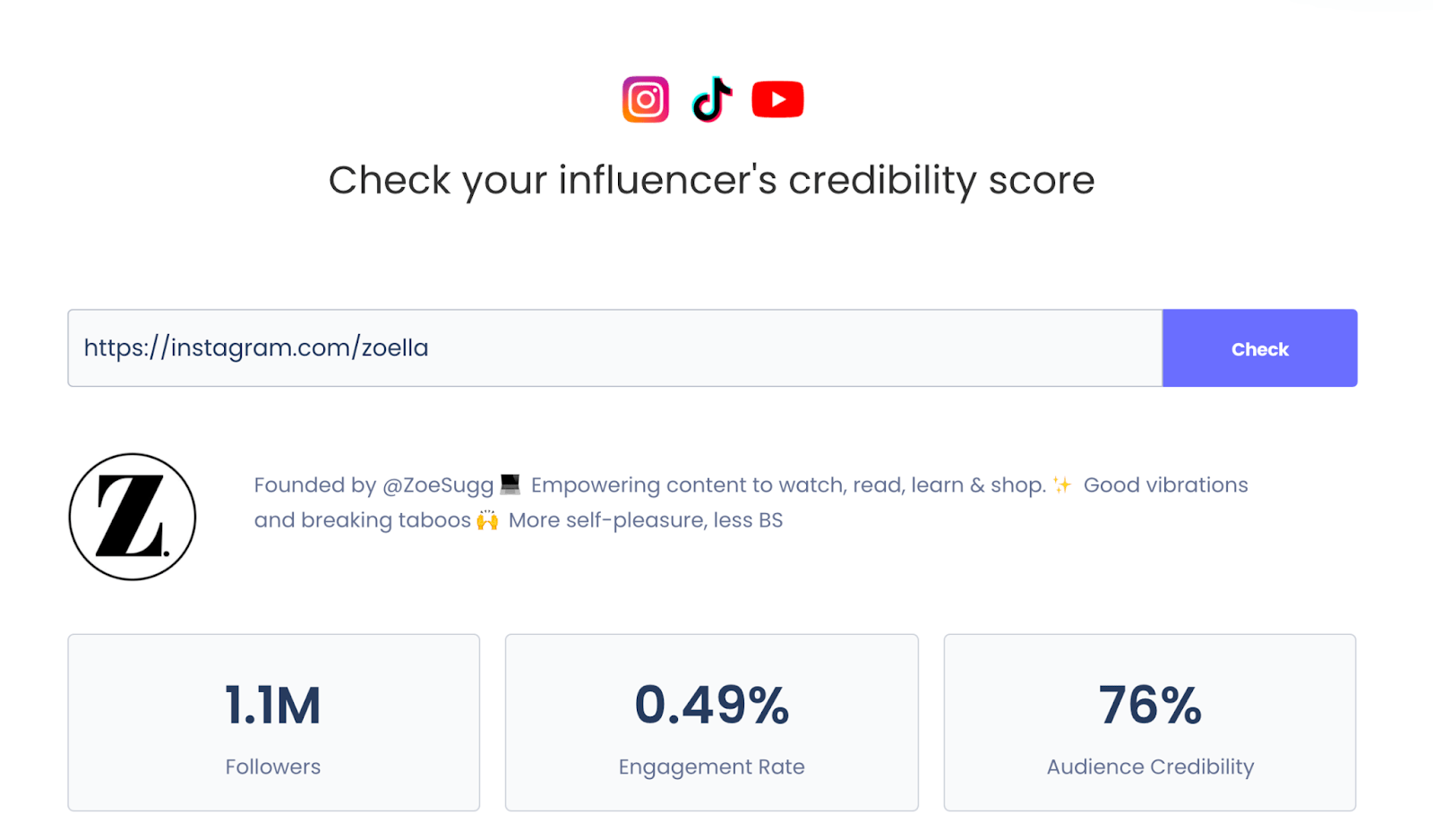
5. Iron out terms of the collaboration
Got your shortlist of influencers? Before reaching out to them, iron out the terms of your collaboration.
Kyle Dulay, co-founder of Collabstr, argues that “One of the main reasons influencers ignore you or decline to work with you when you reach out is because the project is not well-thought-out.
“You should have a campaign brief that specifies exactly what your brand does, what your goal is, examples of content you would like to see, and any documents the influencer should take a look at.”
Kyle continues, “This tells the influencer that you have already planned everything out, and now you just need them to execute the content creation.”
Start by figuring out what the influencers will be promoting. The most common topics for brand<>influencer partnerships are reviews (which influence 42% of social media users’ purchasing decisions.) A brand sends the influencer a free product in exchange for a sponsored social media post.
Other ideas include:
- Instagram Collabs
- Brand ambassadors
- Social media “takeovers”
- Exclusive discount codes for their followers
- Giveaways
“Add value to influencers by collaborating on a giveaway. That benefits them because they will grow their following while adding value to their followers.”
— Sophie Bowman, CEO of Gifts for Entrepreneurs
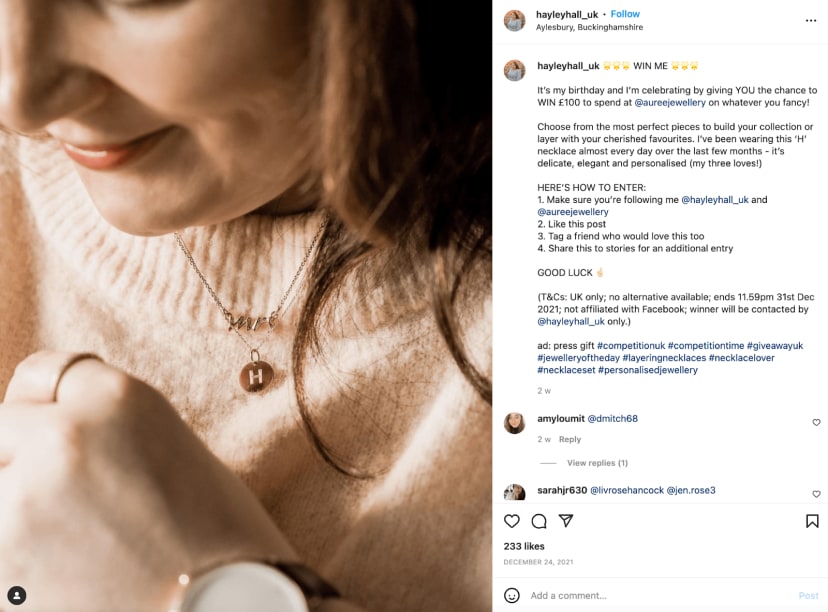
Jason Falls, Senior Influence Strategist at Cornett and author of Winfluence, says: “Each creator should be both focused on—and an expert at—engaging their audience.”
“The brands that engage them should trust that they know how to best do this. That doesn’t mean you can’t or shouldn’t approach them with ideas, but make sure those ideas are very audience-focused rather than brand-focused.
“If you go into it thinking, “What’s in it for me?” the campaign will fall flat. You have to help the creator build something their audience wants to engage with,” Jason adds.
Next, choose a format that best suits that content type. Short-form videos are the most popular form of influencer content format, with 27% of influencers using Instagram Reels or TikTok videos in their campaigns.
That’s shortly followed by permanent posts on their feed (24%) and long-form videos (23%).
Maximize the value you’re getting from an influencer by extending the campaign beyond a single post. Data shows that most Instagram influencers produce between one and four sponsored Instagram posts per collaboration, though you can agree to a multi-channel campaign if the influencer is active across several platforms.
(This is common: A report by Collabstr found that on average, influencers monetize 1.8 different platforms.)

Finally, figure out how the influencer will drive attention towards the sponsored content. Some 86% of marketers use shoppability functions in their influencer campaigns. Directly linking to the website is the most popular, though small percentages use social commerce features like Instagram checkout and Facebook Shops.
“Once we source a suitable influencer, we reach out to them with our vision for the campaign. We brief on what we want to gain from the collaboration and set out payment and timelines.
Once both parties are happy, we will both sign a contract to ensure both parties are aware of what is wanted from one another. We will then send payment and the product and the influencer creates content.”
— Katie Johnson, founder of The Fragrance World
A word of caution when sponsoring social media content
Regardless of what your collaboration looks like, understand the rules associated with the sponsored content an influencer posts:
“If there’s a connection between an endorser and the marketer that consumers would not expect and it would affect how consumers evaluate the endorsement, that connection should be disclosed.”
Do this by having your influencer explicitly state that the content you’ve collaborated on is sponsored. Use terms like:
- “Ad:”
- “[Your brand] gave me this product…”
- “I’m working with [your brand]…”
One in five people would unfollow an influencer if they weren’t transparent about brand collaborations. Dishonesty could also land your brand in hot water with the FTC.
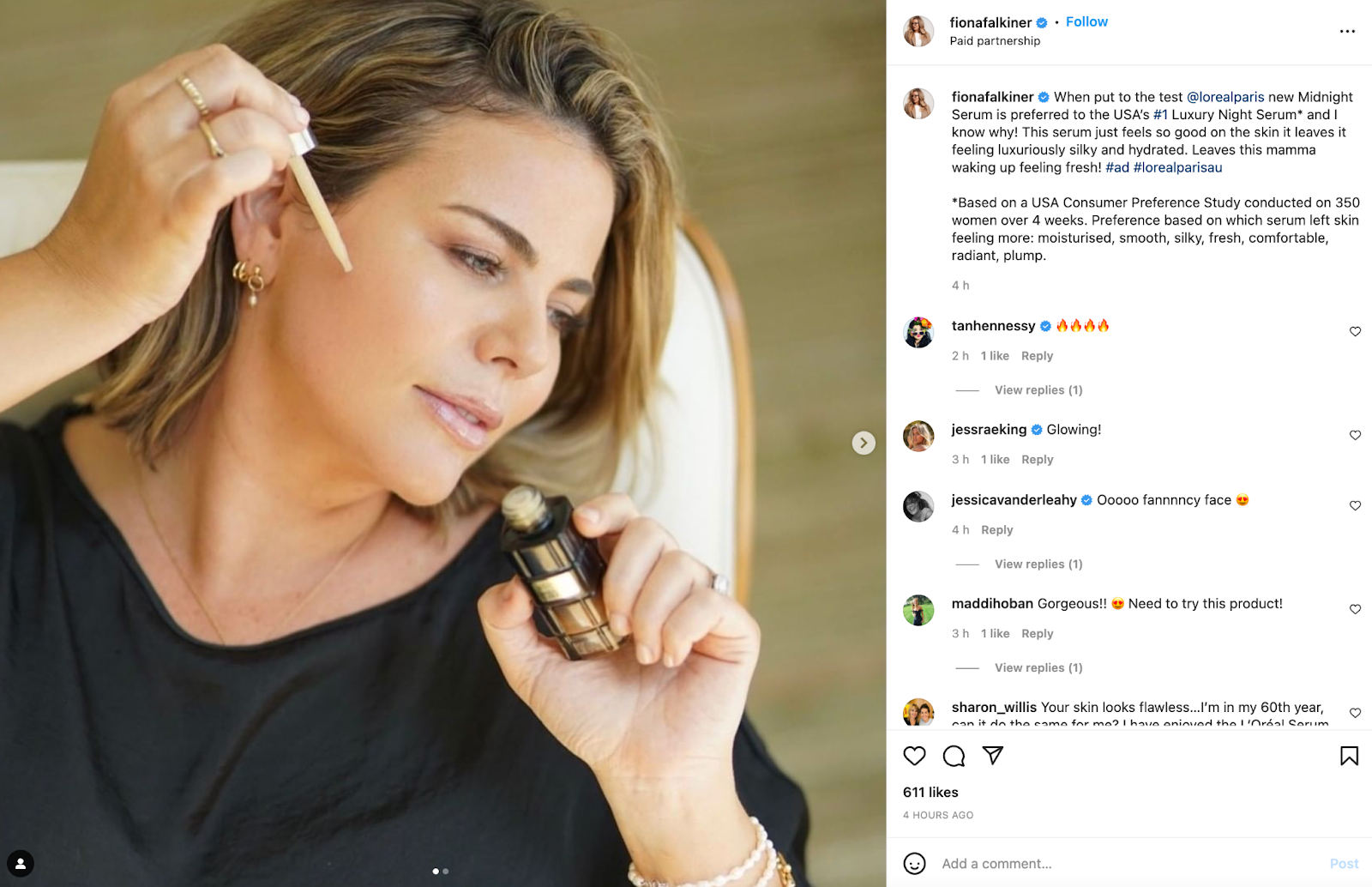
6. Decide on a fee
Awkward money talk incoming:
Influencing is a full-time job for many social media users. They deserve to be paid for the work they do when collaborating with your brand. But at the same time, you don’t want to overpay. The more you spend on an influencer marketing campaign, the greater the pressure to make that money back through selling to their audience.
Ask shortlisted influencers for their rate card. Explain the type of partnership you want to initiate, and the workload included.
Bear in mind there may be large differences in rates from influencer to influencer. How much a social media influencer charges for a sponsored campaign depends on various factors, including their:
- Engagement rate
- Platform
- Industry (Influencers in the entrepreneurial, business, comedy, and family niches demand the highest fees)
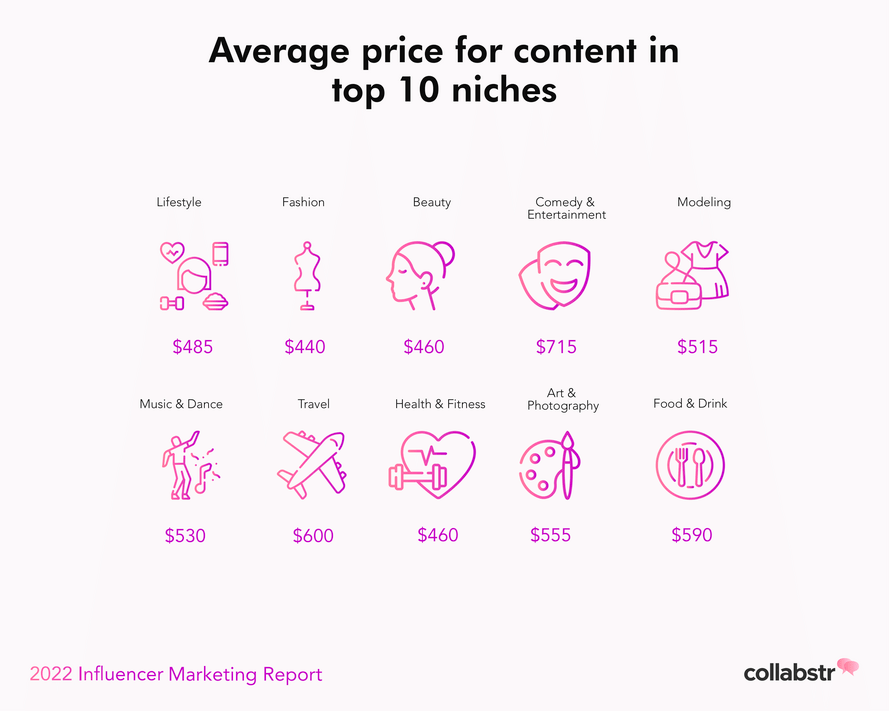
Follower count also largely impacts influencer fees.
Influencer Marketing Hub shares a rough breakdown of how much you should expect to pay to work with each type of social media influencer:
- Nano-influencers: Between $10 and $100 per post.
- Micro-influencers: Between $100 and $500 per post.
- Mid-tier influencers: Between $500 and $5,000 per post.
- Macro-influencers: Between $5,000 and $10,000 per post.
- Celebrities: $10,000+, though influencers that top the Instagram rich list demand millions.
7. Measure success
Remember those influencer marketing goals we set back at the beginning of this strategy?
Once you’ve worked with the influencer and your sponsored content is in their social media feed, circle back to the KPIs you set and figure out whether the campaign was a success or not.
Let’s take a look at the most popular indicators of influencer marketing success and how to figure out whether you achieve them:
- Engagement. How many people liked, clicked, commented on, or shared the influencer’s sponsored content? Nano-influencers tend to have the highest engagement rate, hovering around the 5% mark. Other influencer types—including those with more than a million followers—engage just 1.6% of their audience.
- Clicks. Create UTM links for influencers to use so you can track the activity their followers have on your website. Ask them to share their Instagram Insights—especially if you’re producing Instagram Stories—to see activity happening off the back of your campaign.
- Sales and conversions. Dive into the Google Analytics segment for your influencer’s UTM link to see how many people converted after visiting through their link. Track how many uses an influencer’s unique discount code has. Run a purchase confirmation survey to see how many customers answer “an influencer recommended it” when asked how they hear about you.

Make influencer marketing work for your brand
Influencers have the ability to drive potential customers toward your products—but only if you approach it in the right way.
Take your time when selecting influencers to partner with. The perfect collaborators for you have audiences that overlap with your target customer, charge a reasonable fee for sponsored content, and align with your brand values.
Before you get started, we’ll leave you with this bonus tip from Jason Falls: “As you cultivate relationships that prove productive for you, carve out more long-term arrangements to work with those creators.
“They can not only provide great exposure as they grow, but also serve as an extension of your creative team and provide valuable product feedback of their own, or from their audience.”
#cta-visual-pb#<cta-title>Is your ecommerce store ready for influencer marketing success?<cta-title>See how to create a dynamic, revenue-driving ecommerce site with Shogun Page Builder Advanced.Learn more

Elise Dopson
Elise Dopson is a freelance writer for B2B commerce and martech companies. When she's not writing, you'll find her in the Peak Freelance community or on Twitter.



